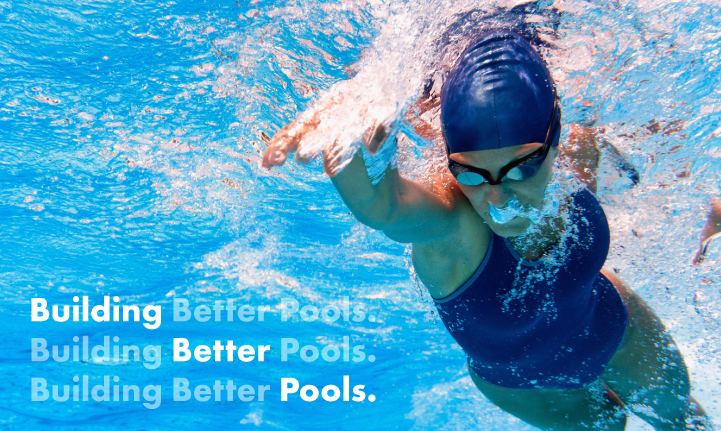What The Term 'Alternative Pool Sanitisers' Entails - A Brief Study
If you own a fibreglass pool, then you should know that you'll need to keep it sanitised, in order to safely use the pool. Usually, chlorine is used to sanitise the pool, but alternatives to chlorine can be used as well. This helps keep the water in the pool free from harmful pathogens, prevents algae from forming, and also controls organic debris that is released when people go swimming in the pool. Examples of organic debris include sweat, body oils, and more.
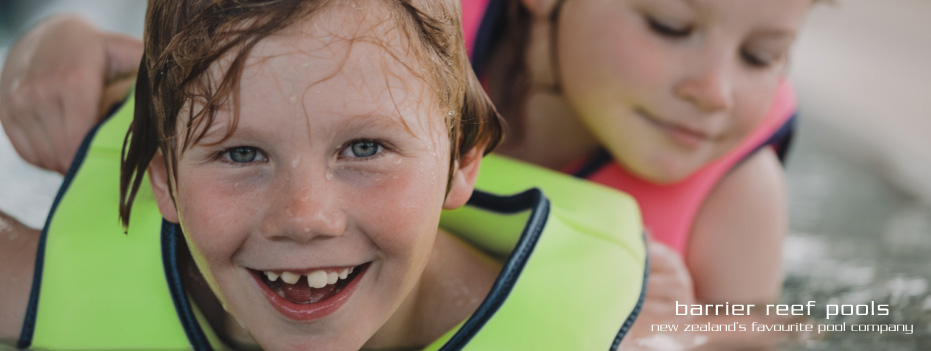
There are certain disadvantages to using chlorine to sanitise your pool. It has a strong smell, it can cause some people irritation in their eyes and skin, and some people also develop allergic reactions to it. But are there any alternatives to chlorine? The answer is yes – there are. Here are some alternatives to chlorine that you can consider that can keep your pool water sanitised just as effectively.
Saltwater
Perhaps the most well-known alternative to chlorine pools is saltwater pools. In a saltwater pool, the salt is turned into chlorine, with the help of a salt chlorinator. This way, while the pool can still be sanitised, you won’t have to worry about experiencing any kind of irritation in your skin and eyes.
In a saltwater pool, salt is passed through a salt cell. This salt then breaks down into chlorine upon getting electrically charged. This helps check the level of chloramines. The level of free chlorine will also be high. This free chlorine is what keeps the water in your fibreglass pool clean.
Salt is also a lot cheaper than many of the pool chemicals that are used to sanitise pools. What you do need to keep in mind, however, is that you’ll need to clean your salt chlorinator and salt cells on a regular basis. You may also find yourself needing to replace them after five years.
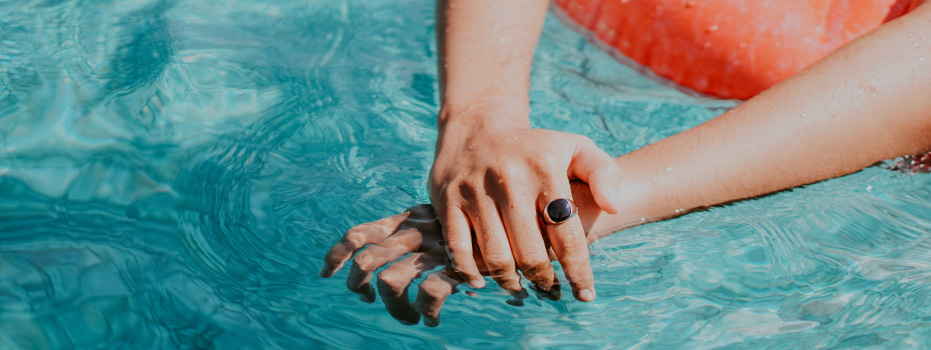
Bromine
Another alternative that you can consider, is bromine. This is a compound that is halogenic and has properties that are similar to that of chlorine. Bromine can be more expensive than chlorine, however. At the same time, it’s also more stable than chlorine. You also won’t need to test your pool water often, should you use bromine to sanitise it.
You will get a strong smell when you use bromine. But it won’t irritate your skin or your eyes. Note that you’ll need to add various additives and pool chemicals to your pool water, in addition to bromine. This is as the effectiveness of bromine is reduced when it’s exposed to UV rays from the Sun. As a result, more pool chemicals need to be added to compensate for this reduced effectiveness.
If you have an indoor pool or spa, where the sun’s rays can’t reach your pool, then using bromine might be a better option for you.
Ozone
If you get an ozone generator, then you’re likely to find it attached to your pool’s filtration system. This filtration system will be introducing ozone into your pool water. Ozone is one of the active forms of oxygen. It will react with any organic contaminants present in your pool water and end up breaking them down.
This process of ozonation can help you reduce how much chlorine you’re using in your pool. You can choose between two types of Ozonator for your fibreglass pool. The first option is a corona discharge. The second option is UV light. If you opt for the corona discharge option, then it will use an electric arc to create ozone. This helps in killing bacteria and other pathogens that could be present in the water of your pool.
The UV light Ozonator, on the other hand, utilises vapour lamps that have low pressure, which will be installed within the pool’s return line. Here, ozone is created, which ends up killing pathogens present in the water.
Note that ozone needs to be used alongside other sanitisers, which could be chlorine as well. Ozone is also rather expensive.
Mineral system
Mineral systems have become more popular recently. This is because they are easy to maintain, but they also reduce how much chlorine you’ll need to sanitise your pool by up to 50%. A mineral system will be attached to the pool system’s pipes. It contains minerals and alloys which can kill algae and other microorganisms that flow through the pool pipes.
There are also models when you can get minerals together with salt. This gives you pool water that isn’t just cleaner, but softer as well. You will still need to use chlorine in this system. The cartridges that you need to buy can be expensive as well, especially if you have a larger pool. These cartridges will also need to be replaced from time to time. This makes this option one of the more expensive alternatives to sanitising your pool.

Non-chlorine shock
If you want to oxidise the organic compounds present in your pool water, then this option can be perfect for you. You will need to use chlorine alongside non-chlorine shock to fully sanitise your pool. Once the contaminants within the pool are oxidised, this can keep the chloramine levels of the pool low. As a result, the chlorine that you add to the fibreglass pool will be more effective as well. Along with shocking your pool, maintaining the pool itself can be equally as important to ensure that your swimmers stay safe in the pool.
If you have an outdoor pool, then the rays from the sun will naturally oxidise organic contaminants in your pool water. Non-chlorine shock then, becomes a better option for indoor pools, especially if the indoor pool is used often. You’ll also need to be careful to ensure that people don’t use your pool immediately after you shock it. Non-chlorine shock is often used in hot tubs as well as spas, in order to oxidise any organic matter that might be present in it.
Conclusion
If you don’t want to use chlorine to sanitise your pool, then there are several alternatives that you can consider. Some of these alternatives, like ozone, are more expensive than chlorine. You also have cheaper options, like a salt chlorinator which uses just salt to keep the water in your pool clean. This guide lists five alternatives to chlorine that you can consider.
What The Term 'Alternative Pool Sanitisers' Entails - A Brief Study
If you own a fibreglass pool, then you should know that you'll need to keep it sanitised, in order to safely use the pool. Usually, chlorine is used to sanitise the pool, but alternatives to chlorine can be used as well. This helps keep the water in the pool free from harmful pathogens, prevents algae from forming, and also controls organic debris that is released when people go swimming in the pool. Examples of organic debris include sweat, body oils, and more.
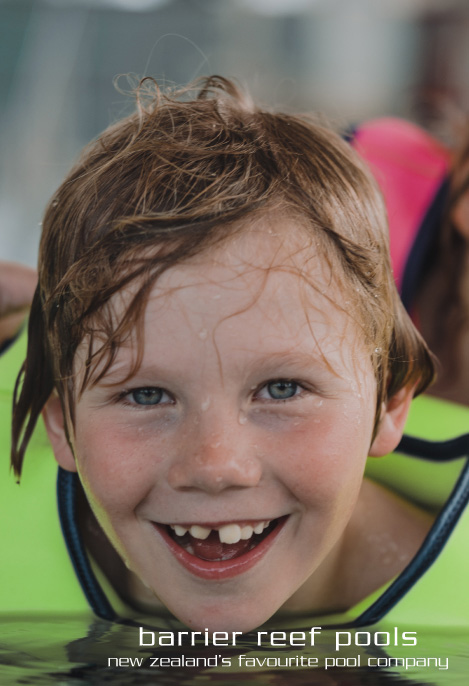
There are certain disadvantages to using chlorine to sanitise your pool. It has a strong smell, it can cause some people irritation in their eyes and skin, and some people also develop allergic reactions to it. But are there any alternatives to chlorine? The answer is yes – there are. Here are some alternatives to chlorine that you can consider that can keep your pool water sanitised just as effectively.
Saltwater
Perhaps the most well-known alternative to chlorine pools is saltwater pools. In a saltwater pool, the salt is turned into chlorine, with the help of a salt chlorinator. This way, while the pool can still be sanitised, you won’t have to worry about experiencing any kind of irritation in your skin and eyes.
In a saltwater pool, salt is passed through a salt cell. This salt then breaks down into chlorine upon getting electrically charged. This helps check the level of chloramines. The level of free chlorine will also be high. This free chlorine is what keeps the water in your fibreglass pool clean.
Salt is also a lot cheaper than many of the pool chemicals that are used to sanitise pools. What you do need to keep in mind, however, is that you’ll need to clean your salt chlorinator and salt cells on a regular basis. You may also find yourself needing to replace them after five years.
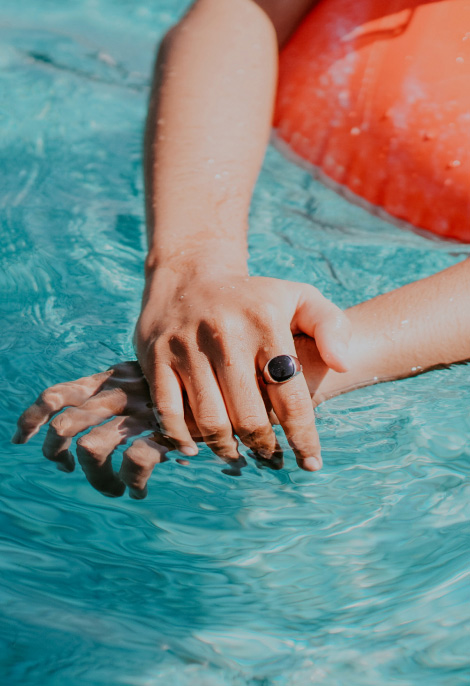
Bromine
Another alternative that you can consider, is bromine. This is a compound that is halogenic and has properties that are similar to that of chlorine. Bromine can be more expensive than chlorine, however. At the same time, it’s also more stable than chlorine. You also won’t need to test your pool water often, should you use bromine to sanitise it.
You will get a strong smell when you use bromine. But it won’t irritate your skin or your eyes. Note that you’ll need to add various additives and pool chemicals to your pool water, in addition to bromine. This is as the effectiveness of bromine is reduced when it’s exposed to UV rays from the Sun. As a result, more pool chemicals need to be added to compensate for this reduced effectiveness.
If you have an indoor pool or spa, where the sun’s rays can’t reach your pool, then using bromine might be a better option for you.
Ozone
If you get an ozone generator, then you’re likely to find it attached to your pool’s filtration system. This filtration system will be introducing ozone into your pool water. Ozone is one of the active forms of oxygen. It will react with any organic contaminants present in your pool water and end up breaking them down.
This process of ozonation can help you reduce how much chlorine you’re using in your pool. You can choose between two types of Ozonator for your fibreglass pool. The first option is a corona discharge. The second option is UV light. If you opt for the corona discharge option, then it will use an electric arc to create ozone. This helps in killing bacteria and other pathogens that could be present in the water of your pool.
The UV light Ozonator, on the other hand, utilises vapour lamps that have low pressure, which will be installed within the pool’s return line. Here, ozone is created, which ends up killing pathogens present in the water.
Note that ozone needs to be used alongside other sanitisers, which could be chlorine as well. Ozone is also rather expensive.
Mineral system
Mineral systems have become more popular recently. This is because they are easy to maintain, but they also reduce how much chlorine you’ll need to sanitise your pool by up to 50%. A mineral system will be attached to the pool system’s pipes. It contains minerals and alloys which can kill algae and other microorganisms that flow through the pool pipes.
There are also models when you can get minerals together with salt. This gives you pool water that isn’t just cleaner, but softer as well. You will still need to use chlorine in this system. The cartridges that you need to buy can be expensive as well, especially if you have a larger pool. These cartridges will also need to be replaced from time to time. This makes this option one of the more expensive alternatives to sanitising your pool.
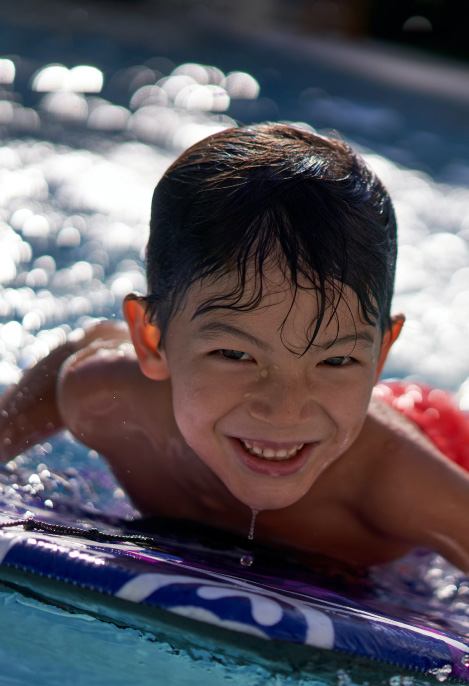
Non-chlorine shock
If you want to oxidise the organic compounds present in your pool water, then this option can be perfect for you. You will need to use chlorine alongside non-chlorine shock to fully sanitise your pool. Once the contaminants within the pool are oxidised, this can keep the chloramine levels of the pool low. As a result, the chlorine that you add to the fibreglass pool will be more effective as well. Along with shocking your pool, maintaining the pool itself can be equally as important to ensure that your swimmers stay safe in the pool.
If you have an outdoor pool, then the rays from the sun will naturally oxidise organic contaminants in your pool water. Non-chlorine shock then, becomes a better option for indoor pools, especially if the indoor pool is used often. You’ll also need to be careful to ensure that people don’t use your pool immediately after you shock it. Non-chlorine shock is often used in hot tubs as well as spas, in order to oxidise any organic matter that might be present in it.
Conclusion
If you don’t want to use chlorine to sanitise your pool, then there are several alternatives that you can consider. Some of these alternatives, like ozone, are more expensive than chlorine. You also have cheaper options, like a salt chlorinator which uses just salt to keep the water in your pool clean. This guide lists five alternatives to chlorine that you can consider.

